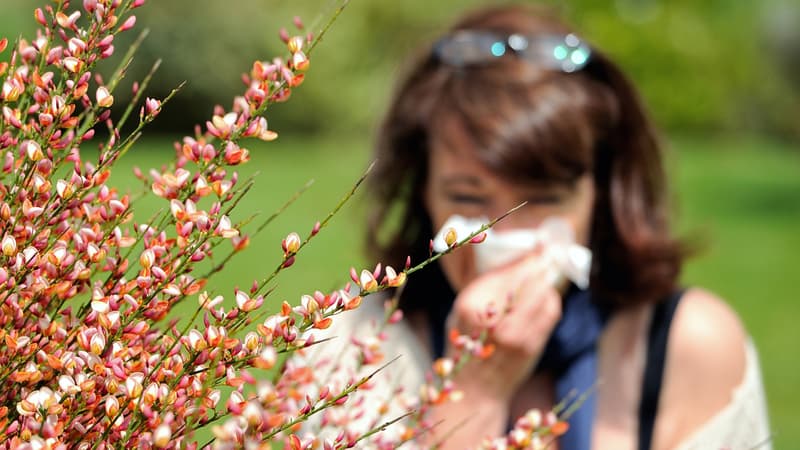Pollen season is not over yet. At least not for Ambrosia pollen, which is said to cause late-onset allergies; the pollination peak of this weed occurs between mid-August and mid-September. The National Aerobiological Surveillance Network (RNSA) launched the alert on August 25 and placed 13 departments at “high level” allergic risk.
These are the Drôme, Ardèche, Isère, Rhône, Ain, Nièvre, Cher, Indre, Creuse, Allier, Saone-et-Loire, Vaucluse and Gard.
Between 1 and 3.5 million allergic French
The RNSA also cites “the Mareuil sector in the Dordogne” and specifies that other pollens can also circulate in the air. Although in smaller quantities, they favor a cocktail effect and the transition from a low risk to a medium risk of allergy in certain departments.
People sensitive to Ambrosia pollen should take this alert seriously. According to the National Agency for Food, Environmental and Occupational Health Safety (ANSES), between 1 and 3.5 million French people are allergic to this plant. With more or less disabling symptoms.
These are classic symptoms of a pollen allergy, specifically rhinitis and conjunctivitis, but with often more intense and severe symptoms”, allergist Patrick Ajzenberg specifies on the BFMTV microphone.
“We frequently have asthmatic-type respiratory manifestations. Sometimes we even have skin reactions, which can cause eczema, hives. It is very debilitating,” adds the doctor.
Fortunately, after the heat wave, showers and stormy rains are back in the Rhône Valley. Something to give allergy sufferers a break.
On rainy days there is less pollen in the air because it is on the ground. On the other hand, as soon as the weather is good again, right after, the pollen will continue to disperse and be present in the air, Gilles Oliver, a RNSA aerobiologist, explained to BFMTV.
“And only when the pollination period is over will there really be no more pollen in the air,” he warns. The ragweed pollen season is expected to continue until the end of September, with peak intensity forecast for these days.
Today the Rhône and Loire valleys are the main source of this invasive plant, native to North America. But since 2005, “ragweed populations always appear, more and more, in full progression and densification in the metropolitan territory”, underlines ANSES.
The agency advises pulling up the plant before it flowers in late summer, if you have one in your garden. Be careful when uprooting the plant with gloves. There are several species of ragweed, some of which reach up to four meters in height. Outside your property, if you detect this weed in large numbers, you can report it on signalement-ambroisie.fr, reminds the ANSES.
Source: BFM TV


